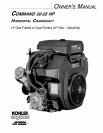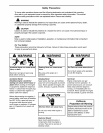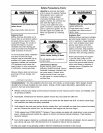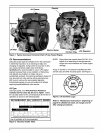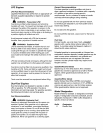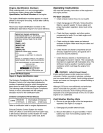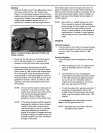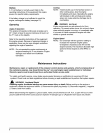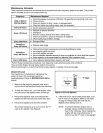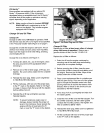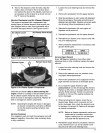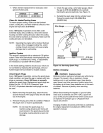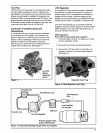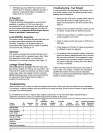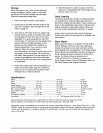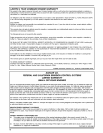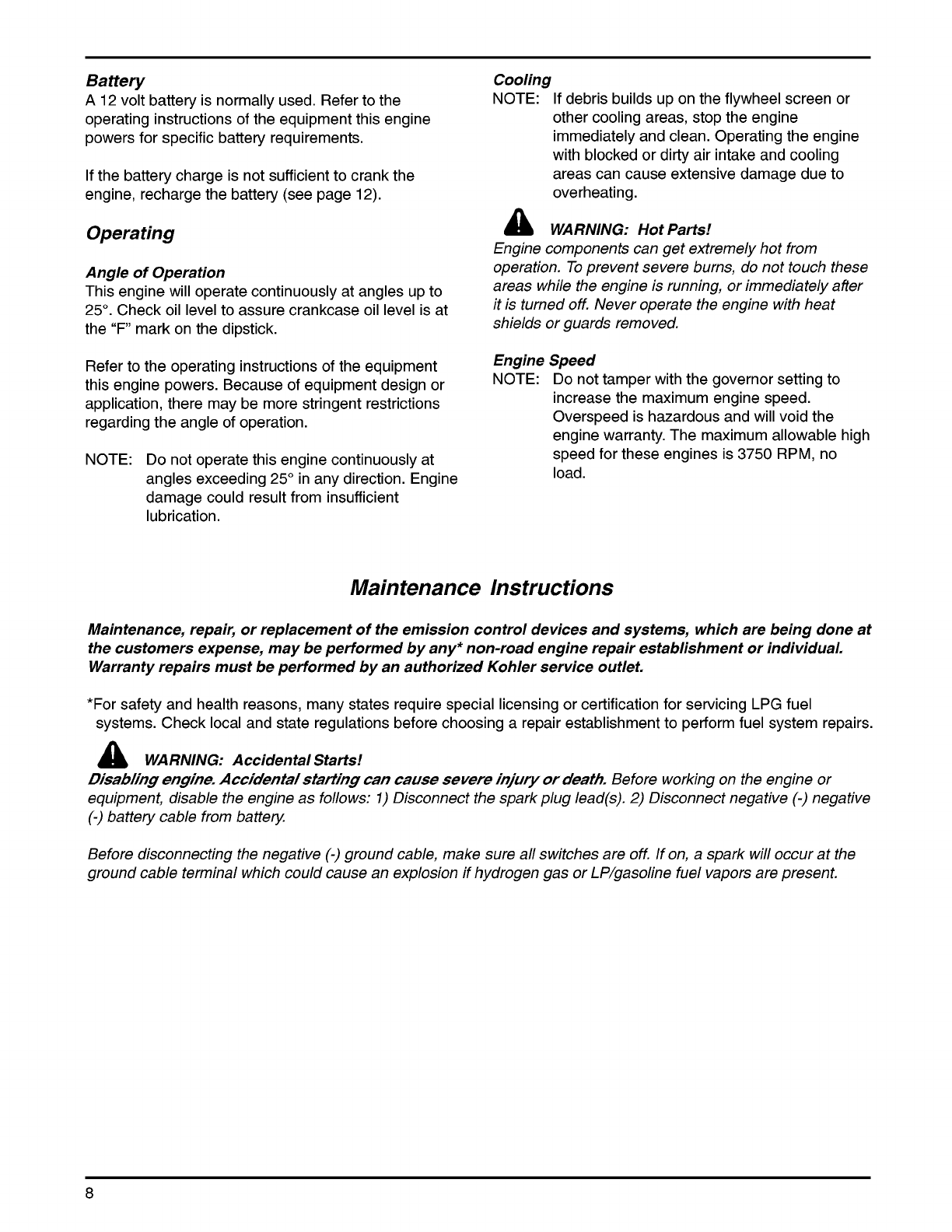
Battery
A
12
volt battery is normally used. Refer to the
operating instructions of the equipment this engine
powers for specific battery requirements.
If the battery charge is not sufficient to crank the
engine, recharge the battery (see page
12).
Operating
Angle
of
Operation
This engine will operate continuously at angles up to
25".
Check oil level to assure crankcase oil level is at
the
"F'
mark on the dipstick.
Refer to the operating instructions of the equipment
this engine powers. Because of equipment design or
application, there may be more stringent restrictions
regarding the angle of operation.
NOTE:
Do
not operate this engine continuously at
angles exceeding
25"
in any direction. Engine
damage could result from insufficient
lubrication.
Cooling
NOTE: If debris builds up on the flywheel screen or
other cooling areas, stop the engine
immediately and clean. Operating the engine
with blocked or dirty air intake and cooling
areas can cause extensive damage due to
overheating.
a
WARNING: Hot Parts!
Engine components can get extremely hot from
operation.
To
prevent severe burns, do not touch these
areas while the engine is running, or immediately after
it is turned off. Never operate the engine with heat
shields or guards removed.
Engine Speed
NOTE:
Do
not tamper with the governor setting to
increase the maximum engine speed.
Overspeed is hazardous and will void the
engine warranty. The maximum allowable high
speed for these engines is
3750
RPM, no
load.
Maintenance Instructions
Maintenance, repai5 or replacement
of
the emission control devices and systems, which are being done at
the customers expense, may be performed by any* non-road engine repair establishment or individual,
Warranty repairs must be performed by an authorized Kohler service outlet,
*For safety and health reasons, many states require special licensing or certification for servicing LPG fuel
systems. Check local and state regulations before choosing a repair establishment to perform fuel system repairs.
a
WARNING: Accidental Starts!
Disabhg engine. Accidenta/startng can cause severe injuv
or
death
Before working on the engine or
equipment, disable the engine as follows:
1)
Disconnect the spark plug lead@).
2)
Disconnect negative
(-)
negative
(-)
battery cable from battery
Before disconnecting the negative
(-)
ground cable, make sure all switches are off. If on, a spark will occur at the
ground cable terminal which could cause an explosion if hydrogen gas or LP/gasoline fuel vapors are present.
8



